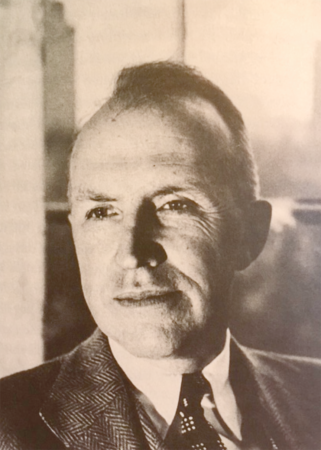This column has always focused on local people who have impacted our area, but this one is rather different. This very special person is a fiction writer who is no longer with us, but was born and died in the month of October. He also wrote his first published work exactly 100 years ago. The author is National Book Award and Pulitzer Prize winner Conrad Richter.
Conrad Richter has roots in our region. When he was just a teenager, his father was pastor at Stone Church in the village of Alvira. This was the same Alvira that was razed in the spring of 1942 when the US government seized the small village and 165 landowners (one of which was my own father) to build the Pennsylvania Ordinance Works. After the war, it became the Federal Correctional Complex (FCC), Allenwood.
Conrad Richter lived in Alvira but worked in Montgomery for several years at a bank and then in his own business, which he and his younger brother started. He married in 1915 and moved to New Mexico because of his wife’s health. From there, and for half a century, he was one of America’s favorite fiction writers.
His first published work was a group of short stories written in 1924. But his breakthrough occurred when he wrote his first novel, “The Sea of Grass” in 1937. It was so popular that it became a Hollywood film starring Spencer Tracy and Katharine Hepburn in 1947. Another one of his books, “The Light in the Forest,” was written in 1953 and made into a Walt Disney film five years later. The popular Saturday Evening Post carried 31 short stories of Richter’s from the 1940s to the 1960s, many of which dealt with the pioneer era.
Conrad Richter’s most popular work was “The Awakening Land,” which was made into a TV miniseries in 1978 and starred Elizabeth Montgomery, Jane Seymour, and Hal Holbrook. It was based on his trilogy about the Ohio frontier; “The Trees” (1940), “The Fields” (1946), and “The Town” (1950). He was awarded the Pulitzer Prize in 1951 for “The Town.”
The Montgomery Area Historical Society gathered an array of various Richter’s books and magazine articles over the years but was blessed in 2018 when a Richter collector sold us his entire collection, including every book Richter wrote in first editions, both in hardback and paperback, a third of them even autographed. Combined with the Richter items that the Historical Society had already compiled on Richter, which included books, magazines, movies, and even letters he wrote — this is one of the most complete Conrad Richter collections in the United States.
One of the archives is a June 10, 1950, Saturday Evening Post magazine with a story entitled “Dr. Hanray’s Second Chance.” The entire story revolves around a doctor who returns to his home area, which has been confiscated by the federal government (sound familiar?). There are a number of people in the story, and the names are almost all from the Alvira days. But most significant was the very last sentence, “And the boy inside of him had made his first sign of peace to the man he had become.”
Richter was a tremendous introvert all his life, and even so shy, he could not receive his Pulitzer Prize himself. But he felt at home in our region. I contend that the White Deer Valley he lived in for just a few years in his teens had a tremendous impact on his life. He hiked all over the mountains and met a number of hunters, trappers, and people who liked isolation. Given their focus on his books and short stories, he must have felt they were representatives of real Americans.
Even though he only spent a short time in our little rural valley, it obviously changed his life. As Richter himself wrote in his Pulitzer Prize novel, The Town, “You can never truly escape the past in a place like this.”
Happy Birthday and Happy First Publication to a true American writer, Conrad Richter.




